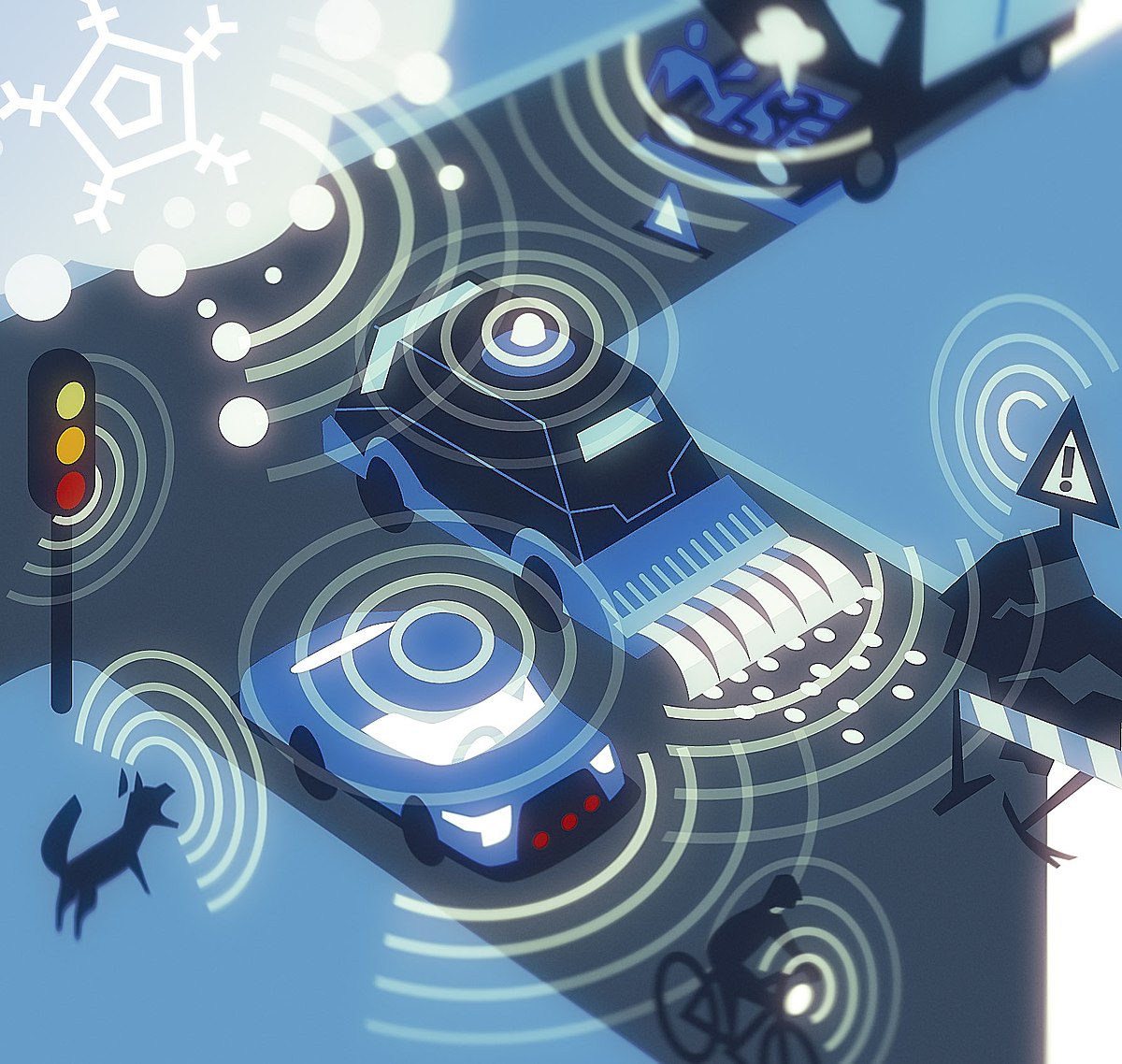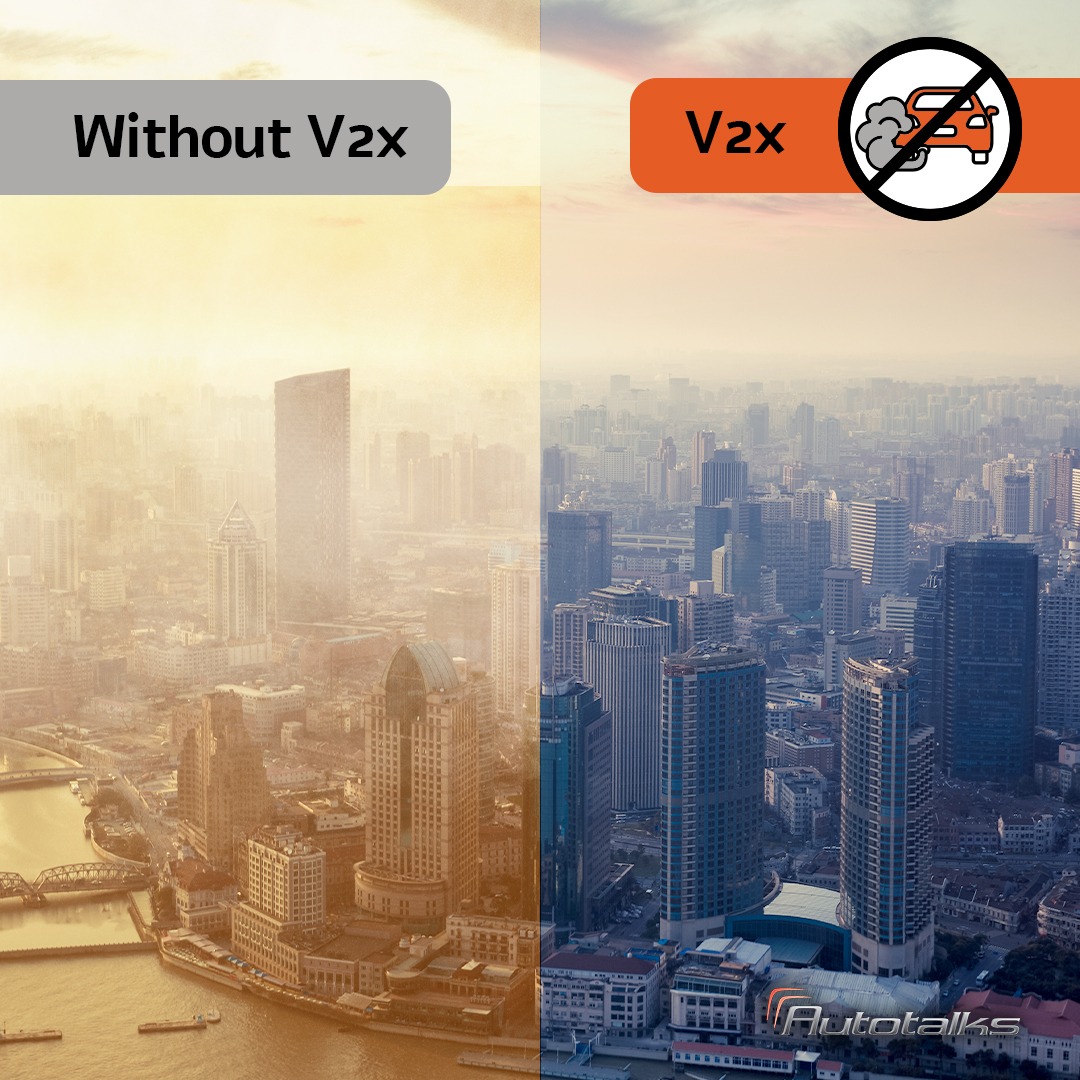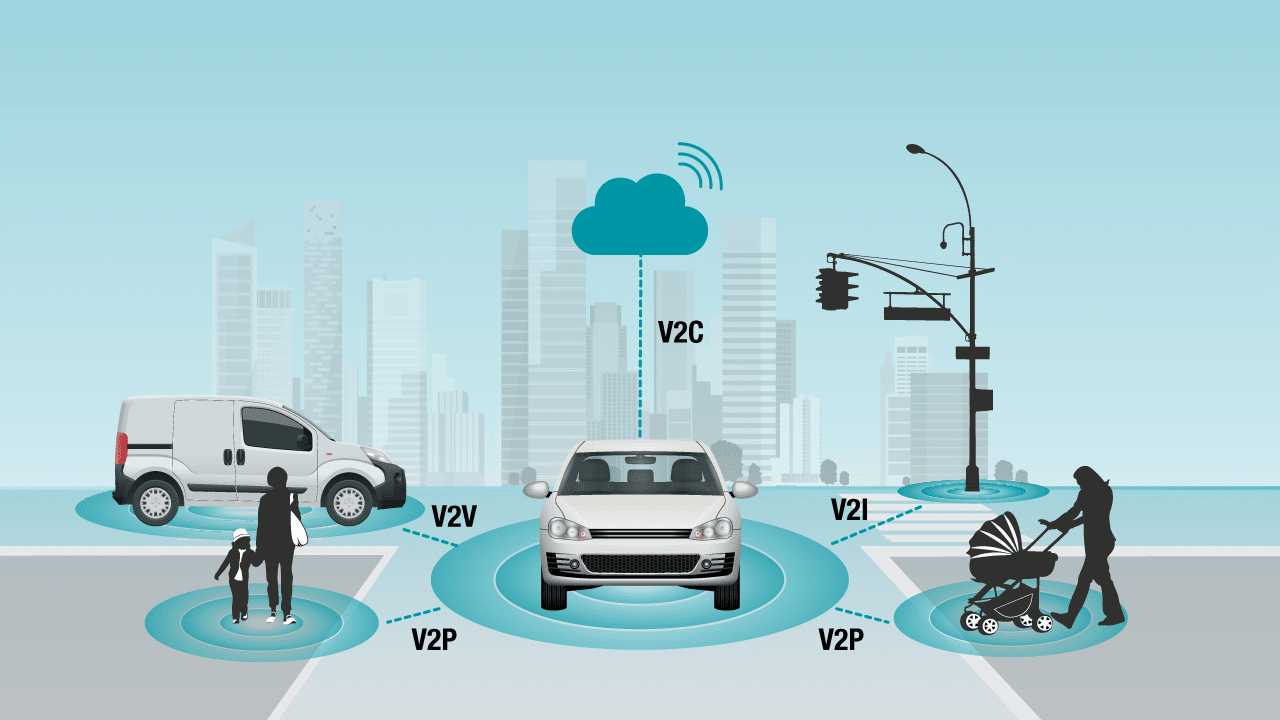The rapid adoption of Vehicle-to-Everything (V2X) communication technology is not only transforming transportation but also playing a pivotal role in advancing urban sustainability. By enabling seamless interaction between vehicles, infrastructure, and networks, V2X enhances traffic management, reduces emissions, and promotes energy efficiency. As cities face growing environmental challenges, V2X technology provides innovative solutions to minimize ecological footprints while fostering a greener future.
This article explores the environmental benefits of V2X technology and its role in building sustainable cities.
Understanding V2X and Its Environmental Relevance

V2X, or Vehicle-to-Everything communication, refers to a network of technologies that enable vehicles to communicate with each other (V2V), infrastructure (V2I), pedestrians (V2P), and broader networks (V2N). This interconnected system uses data to optimize vehicle operations, improve safety, and reduce energy consumption. The environmental significance of V2X lies in its ability to reduce greenhouse gas emissions, lower fuel consumption, and enhance traffic efficiency. By addressing challenges such as traffic congestion and idle times, V2X directly contributes to urban sustainability.
Reducing Emissions Through Traffic Optimization

1. Minimizing Idle Times at Intersections
One of the primary contributors to urban air pollution is vehicle idling at traffic signals. V2X-enabled systems, such as adaptive traffic signals, use real-time data to optimize signal timings based on traffic flow. By reducing idle times, these systems significantly cut fuel consumption and carbon dioxide emissions.
- Dynamic Traffic Control: Real-time adjustments to traffic lights prevent unnecessary stops and starts, leading to smoother traffic flow.
- Eco-Traffic Lights: V2I communication provides drivers with information on optimal speeds to avoid stopping at red lights, further reducing emissions.
2. Improved Traffic Flow Reduces Congestion
Congested roads increase fuel consumption and emissions as vehicles operate inefficiently. V2X addresses this by offering real-time traffic updates and alternative route suggestions, helping drivers avoid bottlenecks.
- Smart Navigation Systems: V2X-enabled vehicles access current traffic data, allowing drivers to choose routes with less congestion.
- Platooning Technology: Enables groups of vehicles to travel closely together at consistent speeds, reducing aerodynamic drag and improving fuel efficiency.
Promoting Energy Efficiency in Urban Transport
1. Enhancing Vehicle Efficiency
V2X technology improves energy efficiency by enabling vehicles to operate more predictably. Coordinated maneuvers, such as smoother lane changes and optimized acceleration, help reduce unnecessary fuel consumption.

- Eco-Driving Assistance: Vehicles receive feedback on optimal driving behaviors, such as maintaining steady speeds and avoiding aggressive braking.
- Efficient Logistics: V2X supports better coordination for delivery vehicles, ensuring optimized routes and reducing fuel use in urban freight operations.
2. Integration with Renewable Energy Systems
As electric vehicles (EVs) become more prevalent, V2X can integrate with renewable energy sources to further enhance sustainability. For example, V2I communication enables EVs to coordinate charging times with grid demand, minimizing reliance on fossil fuels.
- Vehicle-to-Grid (V2G) Technology: Allows EVs to return unused electricity to the grid, balancing energy supply and demand.
- Smart Charging Solutions: Synchronize EV charging with periods of low grid demand or high renewable energy availability.
V2X in Building Smarter, Greener Cities
1. Supporting Eco-Friendly Public Transit
V2X technology plays a critical role in modernizing public transit systems, making them more sustainable and appealing. By integrating buses and trains into the V2X network, cities can improve the efficiency and reliability of public transportation.
- Prioritized Transit Signals: V2I communication gives priority to public transit vehicles at intersections, reducing delays and fuel use.
- Real-Time Updates: Passengers benefit from accurate arrival times and optimized routes, encouraging greater use of public transit.
2. Encouraging Active and Shared Mobility
V2X technology promotes sustainable mobility options by integrating shared vehicles, bicycles, and pedestrian systems into its network. This reduces reliance on private vehicles and decreases overall emissions.
- Bike and Pedestrian Safety: V2P communication alerts drivers to nearby pedestrians and cyclists, improving safety and encouraging active transport.
- Shared Mobility Integration: Enables seamless coordination between shared vehicles, reducing the number of cars on the road and lowering emissions.
Challenges to Overcome for Maximum Impact
1. Infrastructure Upgrades and Investments
Implementing V2X on a large scale requires significant investments in infrastructure. Smart traffic signals, communication networks, and sensor systems must be installed and maintained to realize V2X’s environmental benefits.

- Cost of Deployment: High initial costs may deter adoption in resource-limited regions.
- Urban-Rural Divide: Ensuring that both urban and rural areas benefit from V2X requires widespread infrastructure development.
2. Data Privacy and Security Concerns
As V2X systems rely on extensive data collection, addressing privacy and security concerns is essential. Protecting user data while enabling effective communication is critical for public acceptance.
- Encryption Technologies: Securing V2X communication channels to prevent unauthorized access and data breaches.
- Regulatory Standards: Establishing guidelines to balance innovation with privacy protection.
3. Interoperability and Standardization
To maximize V2X’s environmental impact, interoperability between systems and standardization across manufacturers are vital. Collaborative efforts are required to ensure that V2X technologies work seamlessly, regardless of location or vehicle type.
Future Prospects for V2X and Urban Sustainability
As cities aim to reduce their carbon footprints, V2X technology will play an increasingly important role in urban planning and environmental management. By fostering collaboration between governments, technology providers, and the automotive industry, V2X can address climate change challenges and create more sustainable urban environments.

- Integration with Smart City Initiatives: Combining V2X with other smart technologies, such as IoT sensors and AI, will enhance urban sustainability efforts.
- Expanding Global Adoption: Governments worldwide are recognizing the potential of V2X to meet environmental goals, driving investments and policy support.
- Ongoing Innovation: Advances in V2X communication, such as 6G networks and AI-driven algorithms, will further enhance its capabilities and environmental impact.
Conclusion
Vehicle-to-Everything communication is revolutionizing transportation by enabling greener, more efficient urban systems. From reducing emissions and optimizing traffic flow to supporting renewable energy integration, V2X offers transformative solutions for sustainable cities. As challenges related to infrastructure, data security, and standardization are addressed, V2X will continue to shape a future of cleaner, more sustainable urban mobility.
What are your thoughts on the environmental benefits of V2X communication? Share your perspective in the comments below, or explore our website for more insights into cutting-edge automotive and sustainability technologies. Together, we can drive towards a greener tomorrow!

Leave a Reply